Optimizing the revenue cycle by streamlining and automating payment collections
Streamlining and automating payment collections have become more significant now than ever before, given the challenges faced by both providers and payers in finding qualified employees in today’s workforce. Meanwhile, leadership looks different today with a larger number of people working remotely.
Regulations such as the No Surprises Act also play a role in the strategies needed to successfully meet challenges. More entities are turning to digital adoption, even as interoperability and consumer buy-in reluctance can present some roadblocks. In this roundtable sponsored by Inovalon (previously ABILITY Network), leaders share strategies for helping entities evolve to meet the challenges.
Katie Gilfillan: What anticipated changes or adjustments do you see in the next two years in healthcare?
Angela Shelton: Adopting robotic technology and AI. In the current hiring environment, we are all struggling to hire qualified employees. We have reviewed our pay scale; however, hiring is still a challenge.
Ryan Bell: We need to start with automation. The No Surprises Act is huge. We have a good process for the back end. The front end is scary. Can we stop a claim from going out and review the payment on it and go to adjudication or litigation if we need to? Does an estimate include every service? There’s a lot of talk about the unintended consequences. From the workforce standpoint, we have a hard time getting people. When we lose people, it’s to a large nationwide hospital that has been able to pivot to a remote workforce.
Ashley Allers: In order to compete with the larger healthcare facilities, we’re going to have to completely change what we’re doing, especially as a critical access facility. Working remotely is much more challenging when staff members are wearing many hats versus in an organization where staff have very specific refined duties. There is a significant difference in roles of those who do front-end claim work and those who work a claim through adjudication and collection of the bill. On top of it, now we have surprise billing, how are we going to handle this staffing-wise? How do you manage having to do estimates without some sort of robotics AI? How do you get those to the patients without ever seeing them on the front end? How do we put in a system to communicate electronically with patients if that’s what they want?
Drew Benson: The big thing is price transparency. How we work with insurance companies is going to be vital. More patients have high deductible plans and more out of pocket, and they’re interested in choice in terms of cost. How do we use that to drive more care to us [and] make sure they know that the quality is there at a lower cost?
Zubair Ansari: We have staff across seven states that work in our billing department. Prior to COVID, there was a big push to bring them on-site, but in the end, we decided to keep them off-site. If you have staff that are not happy or not allowed to work certain hours, you’re going to have resignations.
Penny Souci: Artificial intelligence is going to take a larger role, partly because of this staffing issue. How many are doing any sort of remote workforce with revenue cycle folks?
John Tsantakis: Most of our staff is remote. We provide them with whatever computer system they need. The comp package isn’t any different for remote versus in-house staff.
Patrick Warren: Has anyone taken a look at outsourcing?
Stacie Zins: Our vendor partners have the same challenge of staffing. It’s a continuing challenge: Their cost goes up as their cost to hire and retain is increasing. Like many providers they are also struggling to meet budget.
Shelton: We’re seeing something very similar with a vendor who worked some of our claims. They outsourced to India, and then India was hit hard with COVID.
Bell: We started to engage a little bit with staffing agencies, not necessarily outsource. We have specialty claims to get outsourced. We’ve started to work with some vendors that do temp-to-hire because they have a broader net, but it’s like paying for the price of two.
Tsantakis: I see more vertical integration with the prior authorization process, because things are becoming much more complicated. It’s having the technical expertise on the front end, and using data to integrate into the claim side to see, before you even bill out the claims, which ones are going to be denied. You’re developing very customized appeals to get the medical necessity on the claim side.
Ansari: A lot of organizations should internally leverage digital strategy — how do you get people to pay prior to arrival? There are a lot of good vendors out there, but people should also optimize their current system and structures that might have that functionality.
Benson: With our billing, we are unable to use the temp services to find any good quality people to fill in. We worked with one of our vendors [that is] already tuned in to our EMR to support us while we look to get the right person.
Warren: What are some of the innovations you’ve made or are contemplating regarding how you work with patients on the care side?
Bell: We’re implementing a new COB process. Can we get payment in advance? It’s a big shift in patient behavior because they’re used to getting a bill in their hand and an EOB to balance the two. If you work with them, and they know what’s coming, you can speed that process up.
Tsantakis: The world of protons is new and innovative. We use our data now to determine which patient you can go at risk with because with cancer treatment, time is of the essence. The approval ratings are very high. Physicians are happy. Our approval timeline from when we first started was over 10 days on average. Now we’re at three to four days on average.
Gilfillan: What are the top three challenges you face in your revenue cycle processes?
Allers: Billing is the biggest challenge. Payers don’t communicate well back to facilities. When we go into this process of attempting to get payment with dispute resolution, if someone disputes it, are we even going to get notification before a timeline is up? With surprise billing, the challenge is not only the front end of the revenue cycle, but clinicians are going to have to be more involved in some of this process. There are some physicians that are great at working through the whole cycle, but at the end of the day, they’re there to treat. Workforce recruitment and retention is big. Prior authorizations are another challenge — you can’t even do a screening colonoscopy without getting authorizations.
Bell: We run into a lot of issues with aging claims that are not adjudicated. We have staffing issues; payers are running into the same issues. The other challenge is high-dollar deductibles.
Souci: More of our patients have a bigger divide between those who can utilize the prompt pay discount right away, and the other ones who aren’t interested in a financing plan because they can’t afford it.
Zins: To expand on prior authorizations, all of the payers have different med policies. All of these new legislations are an administrative burden. We’re supposed to lower the cost of care, but we have to track it. It is harder to collect funds from patients or from payers today than it ever has been, especially with all of the payer platform issues. I would like to see payer standardization across the board.
Ansari: We’re seeing a larger trend in Maryland on credentialing denials. It’s getting super annoying to have providers start taking care of someone and then find out, down the line, they’re not credentialed.
Bell: For No Surprises Billing, for a provider to mess up, it’s a huge fine. For a payer, it’s a tickle on the wrist. We talk about partnering with them, but it’s a façade. Their job is to keep their money as long as they can and not pay us; our job is to fight for that money and show what should be paid.
Tsantakis: The payers are slowing down their payments because of resources.
Shelton: We’re having similar issues with the large payers not paying as timely, particularly in our state with Workers’ Compensation. There are so many work comp vendors working from home, and you literally can’t get someone on the phone. Never in my career have I seen it this bad.
Warren: What role does technology and digital adoption play in your process improvements and cost- saving strategies?
Benson: Our billing systems have to be able to be smarter to adopt all these different changes — being able to build in rules for every different insurance company because they are changing, and [then] how to keep that up. We’ve got to find a better link to get the information faster and have the system be able to automate that.
Shelton: We have a small hospital — and we have old technology as far as EMR goes — and their ability to keep up with something like the No Surprises Act is a surprise to them. We’re having to find bolt-on technologies or other vendors who are up to date on technology. Switching to a new EMR is not something we can afford right now.
Allers: Optimizing our system to make it work efficiently has been key for us.
Zins: Some of the tech side is super cool. But the long-term expense of that and manpower resource piece is often underestimated.
Allers: It is critical to understand your system. We have not had to pay for most of the optimization we have done because we’ve been able to do it ourselves.
Bell: I’m excited to venture into the software that categorizes your work use for you and brings your top accounts to the top. They’re seeing productivity boosts.
Ansari: Many times, we depend on our lateral partners to build into this. I keep a couple of people in my side of the business side that can do the bill. I feel like I should be able to drive the revenue cycle process more than having somebody try to interpret that. These people report up through our vertical. The turnaround time is much better.
Allers: We have done that considerably with report writing in maintaining a trained team, and it has been a success.
Tsantakis: One of the challenges with all of these systems is that they don’t speak to each other. There’s a talent shortage, and people can’t afford to go to school. It’s becoming harder to find specialized skill sets in people.
Benson: I hope to see that Cerner and Epic take those customizations and push them out to more organizations that have needs. IT is holding tight. We’re trying to be more flexible and sharing data more makes us more vulnerable to ransomware. They’re attacking all of the healthcare organizations because it’s the biggest penalty, and people are willing to pay.
Gilfillan: What do you know today that you wish you knew five years ago?
Bell: Leadership is hard. We’re all VPs, directors, managers. I’m passionate about this. I wish my staff was passionate about this. How do you make a career out of that and not just a job? When we lose somebody, we don’t have the next manager to step into that role.
Warren: In this remote work setting, one of the challenges is how do we become good leaders while maintaining productive staff and also advancing them in their career?
Zins: Customization can be as painful as it is amazing in that when you have to pull it out or redo it because something completely changed or there’s a new rule or regulation, the more customized it is, the harder it is. For leaders, there’s a lot of burnout on re-education, performance management and trying to boost up that cultural piece as well.
Ansari: I could have probably restructured my team a little bit better based on my industry trends. We’ve had an increase in a lot of folks who are bilingual. Five years ago, had we looked outside of our healthcare metrics and noticed geographical and immigration trends, we would have started hiring some people who are bilingual.
Tsantakis: New York Proton Center opened its doors in July 2019. If we knew five years ago that we didn’t need as much of a third-floor space and knowing that remote does work, I think we’re going to see more bed space
versus office space.
Warren: How do you believe hospitals will need to evolve to meet the needs of the healthcare consumer?
Ansari: There’s going to be a big focus on digital strategy, I think self-pay MFA accounts or medical financial systems are going to need to be in play. From the time a patient is scheduled to the time they walk in, the expectations should be clear.
Bell: We need to understand what consumerism means to our patients. Consumerism for a 70-year-old with Medicare is different than a consumerism for a 22-year-old who does everything off their phone.
Tsantakis: We’ll see more of a normalization of that as well. I’m curious what our future grandkids and great grandkids are going to want.
Benson: It’s the access into our systemand how do we drive it? I click something on my phone andit sends me to a physician in Texas who does my telehealth visit. If I need a follow-up, it’s local. If we want the care to come to our facility, how are we getting that access driven to us? It’s getting more consumerfriendly. If we want the business to come to us, we have to figure out how we are part of that consumer friendliness.
HFMA Roundtable Participants
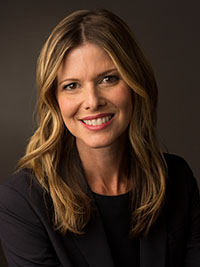
Katie Gilfillan
Director, healthcare finance policy, physician and clinical practice, HFMA, Westchester, Ill.
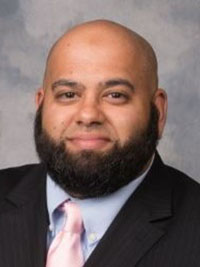
Zubair Ansar
Senior director, physician reimbursement, Luminis Health Clinical Enterprise, Annapolis, Md.
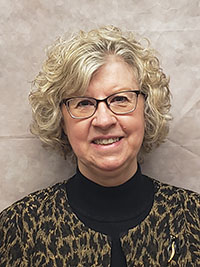
Penny Soucie
CFO, Jackson County Regional Health Center, Maquoketa, Iowa
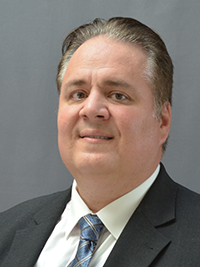
John Tsantakis
Vice president of finance, New York Proton Center, New York, N.Y.
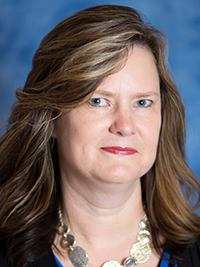
Angela Shelton
Chief revenue cycle officer, Hughston Clinic, Columbus, Ga.
Ryan Bell
Director of patient financial services, Riverside Healthcare, Kankakee, Ill.
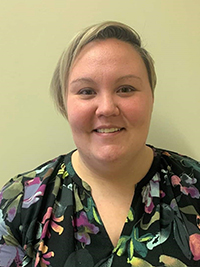
Ashley Allers
Revenue cycle director, Van Diest Medical Center, Webster City, Iowa
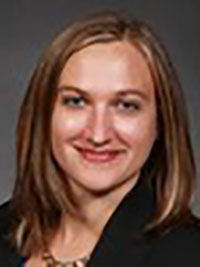
Stacie Zins
Director patient financial services, North Memorial Health Hospital, Robbinsdale, Minn.

Patrick Warren
Associate vice president, sales, Inovalon (previously ABILITY Network), Minneapolis, Minn.
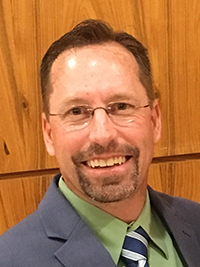
Drew Benson
Chief administrative officer, The Eye Institute of Utah, Salt Lake City, Utah
About Inovalon
ABILITY® Network, an Inovalon Company, is a leading cloud-based, SaaS information technology company helping providers and payers simplify the administrative and clinical complexities of healthcare through innovative applications and data analytics. The combination of myABILITY and the Inovalon ONE® Platform facilitates real-time value-based care from payers, manufacturers and diagnostics, all the way to the patient’s point of care.
For more information visit: www.abilitynetwork.com
Or follow us on LinkedIn: https://www.linkedin.com/company/inovalon/
This published piece is provided solely for informational purposes. HFMA does not endorse the published material or warrant or guarantee its accuracy. The statements and opinions by participants are those of the participants and not those of HFMA. References to commercial manufacturers, vendors, products, or services that may appear do not constitute endorsements by HFMA






